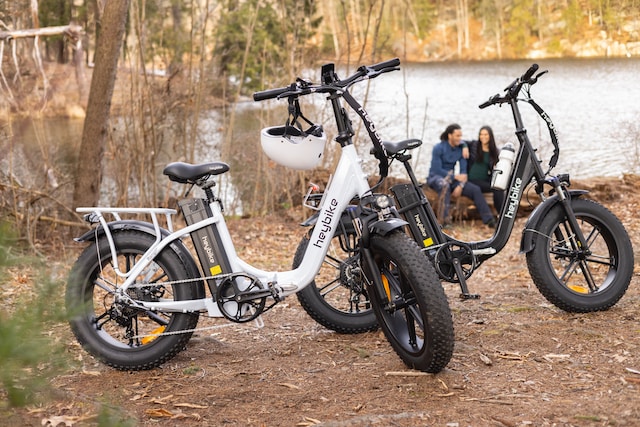Introduction: Cycling during the winter months presents unique challenges, particularly when it comes to navigating the roads in low-light conditions. Reduced visibility can pose risks for cyclists and increase the likelihood of accidents. However, with proper preparation and adherence to safety measures, you can confidently ride your bike even when daylight is limited. In this article, we will provide a comprehensive guide to safe biking in low-light winter conditions.
- Equip Your Bike with Lights: One of the most crucial aspects of cycling in low-light conditions is ensuring that your bike is equipped with the appropriate lights. Install a bright, white light on the front of your bike to illuminate the road ahead. A red rear light is essential for alerting motorists to your presence from behind. Opt for lights with different modes, including steady and flashing options, to enhance visibility.
- Choose Lights with Sufficient Power: Invest in high-quality lights that provide sufficient brightness. Look for lights with a high lumen output to ensure optimal visibility in dark conditions. Consider lights with a long battery life or ones that are rechargeable to avoid running out of power during longer rides.
- Wear Reflective Clothing: Dress in reflective clothing to enhance your visibility to motorists. Choose jackets, vests, or accessories with reflective strips or patches. These reflective elements reflect light back to its source, making you more noticeable on the road. Additionally, opt for clothing with bright colors to further increase your visibility during the day.
- Utilize Reflective Accessories: In addition to reflective clothing, use reflective accessories to increase your visibility. Attach reflective tape or stickers to your helmet, bike frame, pedals, and wheels. Reflective ankle bands or straps are effective in catching the attention of drivers. These accessories play a crucial role in ensuring that you are visible from various angles.
- Stay in Well-Lit Areas: When planning your cycling routes, opt for roads and paths that are well-lit. Stick to well-lit areas, such as streets with sufficient streetlights or dedicated bike paths that are illuminated. Avoid areas with poor lighting or known safety concerns. Familiarize yourself with well-lit routes in your area to make informed decisions about where to ride.
- Be Mindful of Driver Blind Spots: Be aware of driver blind spots, especially when sharing the road with larger vehicles. Avoid lingering in these areas to reduce the risk of collisions. When approaching intersections or turning vehicles, make eye contact with drivers to ensure they are aware of your presence. Taking proactive measures can help mitigate potential dangers.
- Ride Defensively: In low-light conditions, it is crucial to ride defensively. Assume that motorists may have difficulty seeing you and be prepared to react quickly. Anticipate potential hazards and adjust your riding accordingly. Give yourself extra time and distance when maneuvering or stopping to ensure a safe riding experience.
- Regular Bike Maintenance: Maintain your bike regularly, especially during the winter months. Check your brakes, tire pressure, and overall bike condition frequently. Cold temperatures can affect tire pressure, so ensure they are properly inflated. Well-maintained brakes and tires contribute to better control and safer riding in low-light conditions.
- Use Bike-Specific Navigation Apps: Consider using bike-specific navigation apps or GPS devices that offer route planning and real-time tracking. These apps can provide valuable information about road conditions, including areas with low-light or hazardous conditions. Utilize these tools to choose safer routes and make informed decisions while riding.
- Stay Updated on Weather Conditions: Stay updated on weather forecasts and conditions before heading out for a ride. Be aware of potential weather changes during your ride and adjust your plans accordingly. If severe weather is expected, consider postponing your ride or choosing indoor alternatives such as stationary cycling.
Conclusion: Navigating the winter roads in low-light conditions requires extra precautions and attention to safety. By equipping your bike with proper lights, wearing reflective clothing, choosing well-lit routes, and riding defensively, you can enjoy safe and enjoyable cycling even during the darkest days of winter. Remember, visibility and preparedness are key to a successful ride in low-light conditions.




